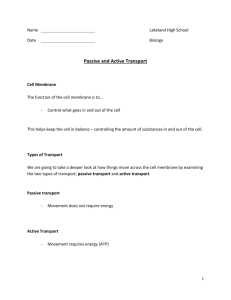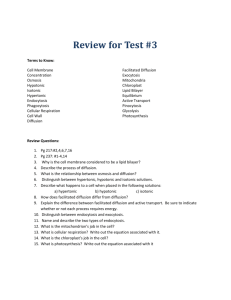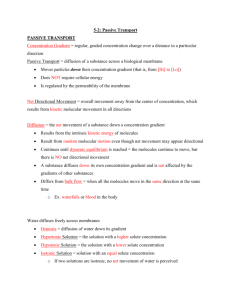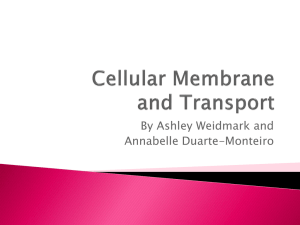Cellular Transport quiz key
advertisement
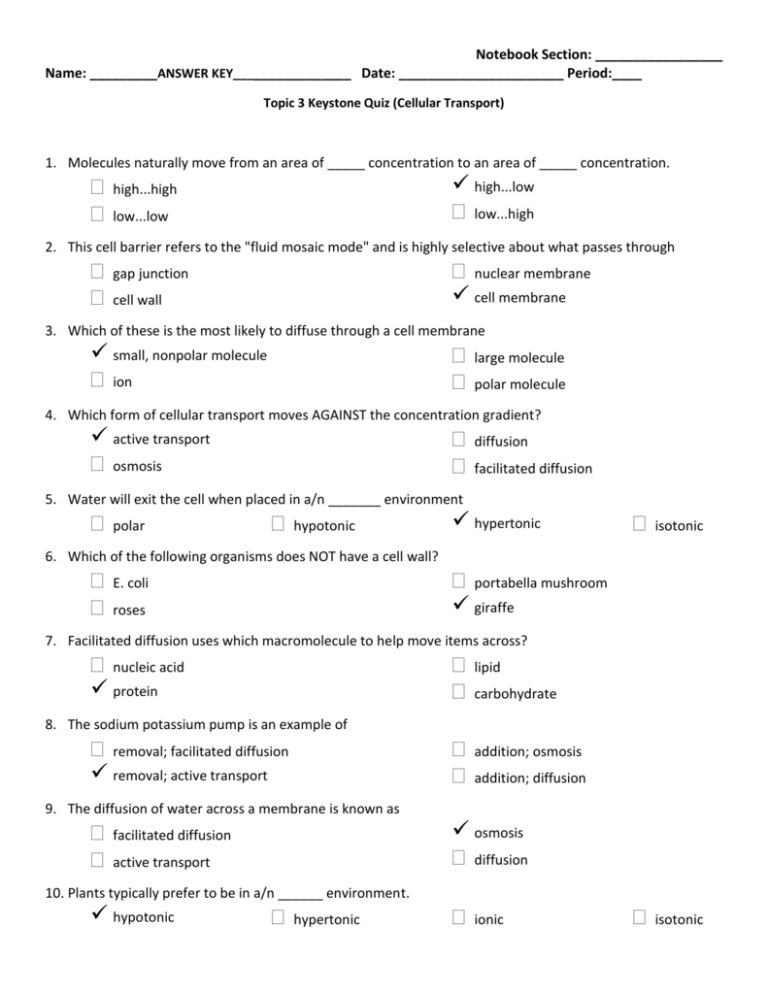
Notebook Section: _________________ Name: _________ANSWER KEY________________ Date: ______________________ Period:____ Topic 3 Keystone Quiz (Cellular Transport) 1. Molecules naturally move from an area of _____ concentration to an area of _____ concentration. high...low low...high high...high low...low 2. This cell barrier refers to the "fluid mosaic mode" and is highly selective about what passes through nuclear membrane cell membrane gap junction cell wall 3. Which of these is the most likely to diffuse through a cell membrane small, nonpolar molecule ion large molecule polar molecule 4. Which form of cellular transport moves AGAINST the concentration gradient? active transport osmosis diffusion facilitated diffusion 5. Water will exit the cell when placed in a/n _______ environment polar hypotonic hypertonic isotonic isotonic 6. Which of the following organisms does NOT have a cell wall? portabella mushroom giraffe E. coli roses 7. Facilitated diffusion uses which macromolecule to help move items across? nucleic acid protein lipid carbohydrate 8. The sodium potassium pump is an example of removal; facilitated diffusion removal; active transport addition; osmosis addition; diffusion 9. The diffusion of water across a membrane is known as osmosis diffusion facilitated diffusion active transport 10. Plants typically prefer to be in a/n ______ environment. hypotonic hypertonic ionic Name: _____________________________________ Notebook Section: _________________ Date: ______________________ Period:____ Topic 3 Keystone Quiz (Cellular Transport) 1. Molecules naturally move from an area of _____ concentration to an area of _____ concentration. high...high low...low high...low low...high 2. This cell barrier refers to the "fluid mosaic mode" and is highly selective about what passes through gap junction cell wall nuclear membrane cell membrane 3. Which of these is the most likely to diffuse through a cell membrane small, nonpolar molecule ion large molecule polar molecule 4. Which form of cellular transport moves AGAINST the concentration gradient? active transport osmosis diffusion facilitated diffusion 5. Water will exit the cell when placed in a/n _______ environment polar hypotonic hypertonic isotonic isotonic 6. Which of the following organisms does NOT have a cell wall? E. coli roses portabella mushroom giraffe 7. Facilitated diffusion uses which macromolecule to help move items across? nucleic acid protein lipid carbohydrate 8. The sodium potassium pump is an example of removal; facilitated diffusion removal; active transport addition; osmosis addition; diffusion 9. The diffusion of water across a membrane is known as facilitated diffusion active transport osmosis diffusion 10. Plants typically prefer to be in a/n ______ environment. hypotonic hypertonic ionic

